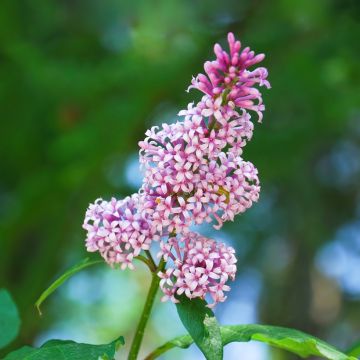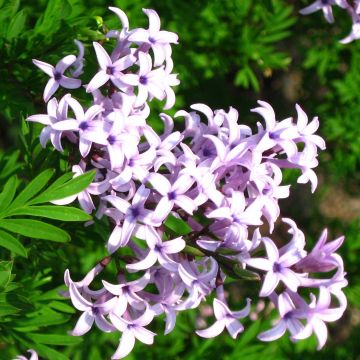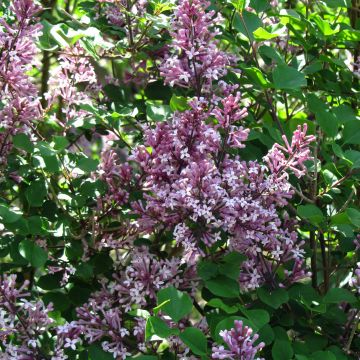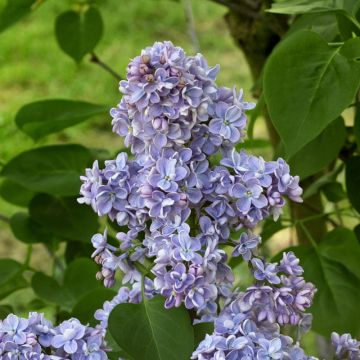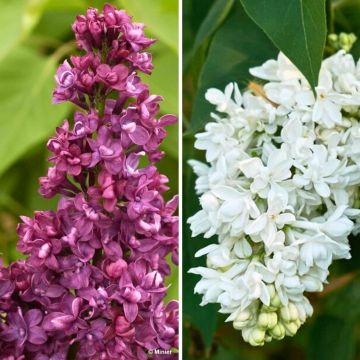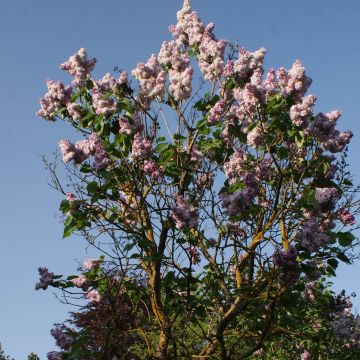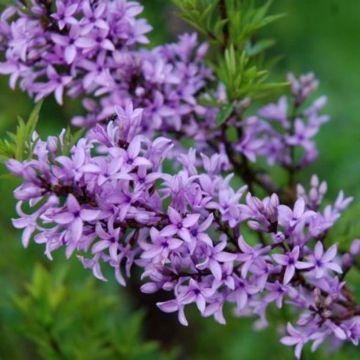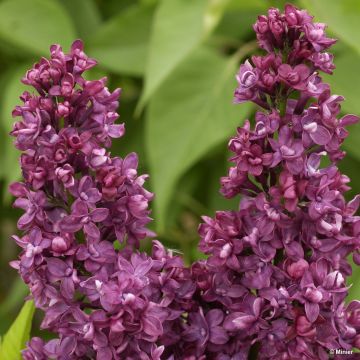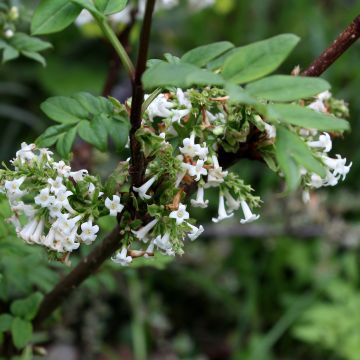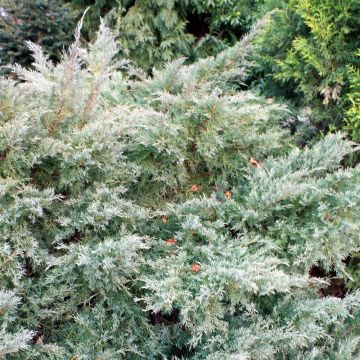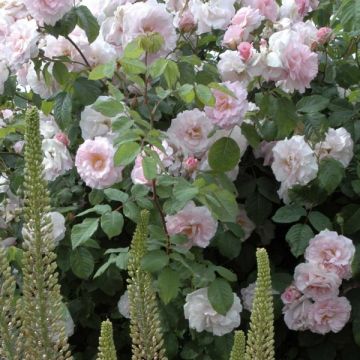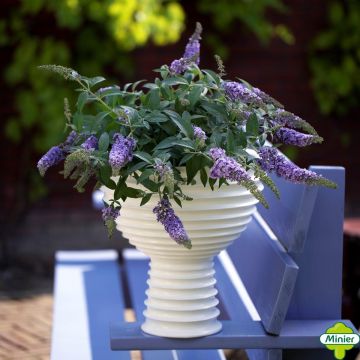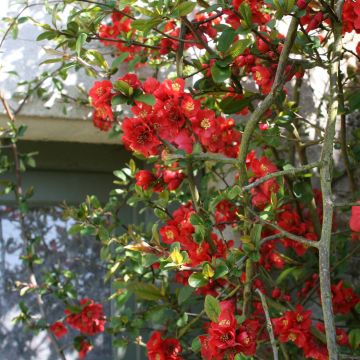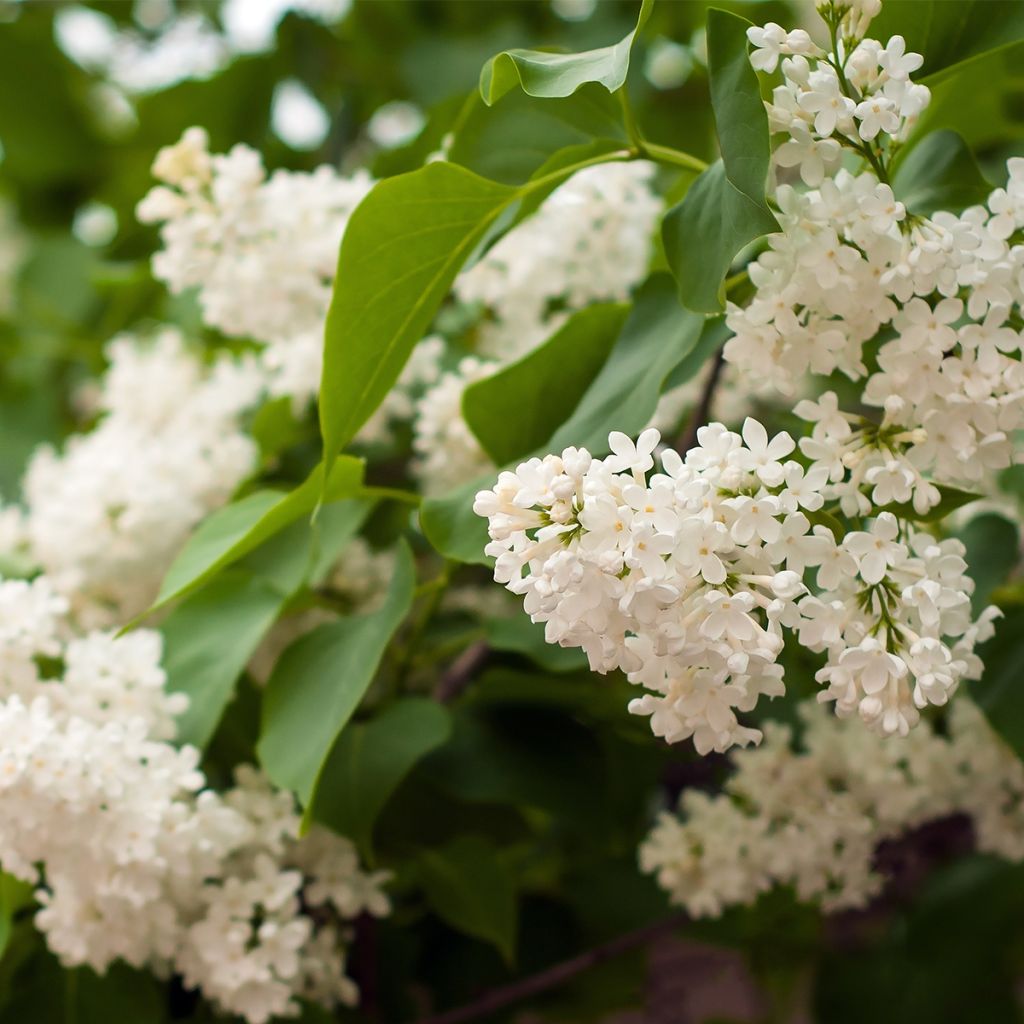

Syringa vulgaris Comtesse Dharcourt - Common Lilac
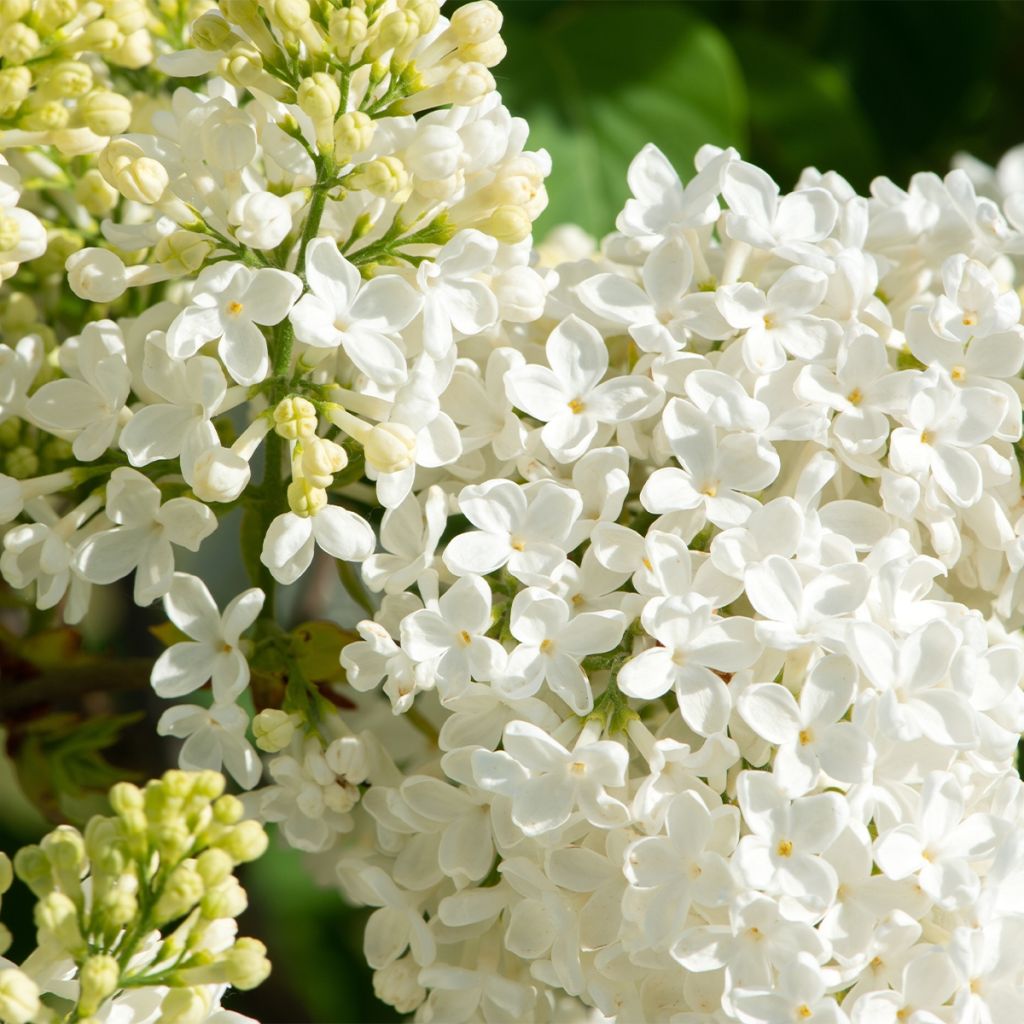

Syringa vulgaris Comtesse Dharcourt - Common Lilac
Syringa vulgaris Comtesse Dharcourt - Common Lilac
Syringa vulgaris Comtesse D'harcourt
Common Lilac, Lilac
Special offer!
Receive a €20 voucher for any order over €90 (excluding delivery costs, credit notes, and plastic-free options)!
1- Add your favorite plants to your cart.
2- Once you have reached €90, confirm your order (you can even choose the delivery date!).
3- As soon as your order is shipped, you will receive an email containing your voucher code, valid for 3 months (90 days).
Your voucher is unique and can only be used once, for any order with a minimum value of €20, excluding delivery costs.
Can be combined with other current offers, non-divisible and non-refundable.
Why not try an alternative variety in stock?
View all →This plant carries a 24 months recovery warranty
More information
We guarantee the quality of our plants for a full growing cycle, and will replace at our expense any plant that fails to recover under normal climatic and planting conditions.
Would this plant suit my garden?
Set up your Plantfit profile →
Description
The lilac 'Comtesse d'Harcourt' is a variety selected by a French nurseryman at the end of the 20th century. It produces beautiful clusters of white flowers in the spring, which exude a light, very pleasant fragrance and radiate an undeniable romantic charm. The Syringa vulgaris 'Comtesse d'Harcourt' is a French variety obtained in 1995 by Claude Bellion, then director of the research and development department of the Minier Nurseries in Angers. Claude Bellion, who was also head of cultivation, notably won the Xavier-Bernard Foundation award in 1993 for his work on ecological hedges. Of fairly large size, this bush is as comfortable in a free hedge as in a mass of country bushes. Very hardy, this easy-to-grow variety thrives in sunny exposure, in any neutral to limestone, not too dry soil.
Lilacs are part of the Oleaceae family, which includes many ornamental genus, Forsythia, Osmanthus, Phyllirea, Chionanthus, the sweetly scented Jasmines, the Privets, the majestic Common Ash, as well as the venerable Olive tree with its legendary longevity. Fallen into disuse in the 1960s-1970s, which saw the arrival of American or Asian lilacs, with their model-like size and often perpetual flowering, the lilac of Europe and its hybrids, larger, are making a strong comeback in our gardens, following the trend of old roses, which were criticised for their single flowering, and were therefore neglected in favour of modern hybrids. It is often forgotten that the Common Lilac, or Lilac of Europe, is actually native to South-east Europe and the west of Asia, more precisely the Balkan peninsula, and it did not arrive in Western Europe until the end of the renaissance. In nature, this untamed plant with its very fragrant purplish blue flowers colonises the rocky hills and braves cold winters
This lilac is a large bush, as it reaches a mature height of 4 m (13 ft 1 in) and 3 m (9 ft 10 in) in width. It should also be taken into account that it suckers, meaning that it gradually widens by emitting new shoots on the periphery of the original plant. It is therefore better to plant it in a sufficiently spacious location. Its pretty green foliage, composed of heart-shaped leaves at the base, 5 to 8 cm (2 to 3.1 in) long, provides a beautiful background to the wonderful white flowering in April-May. At the end of one-year-old branches, long ramified clusters grouped in pairs, or even more, appear. These compound clusters, called thyrsus, sometimes reach 20 cm (7.9 in) in length. Their shape, overall pyramidal, is rather slender. The flowers that make them up are single, of a pure white. They diffuse a light, very pleasant fragrance and allow for the creation of beautiful bouquets for the home.
The common lilac ‘Comtesse d'Harcourt’, with its name hinting at old nobility, is an indispensable bush in a romantic garden. Use it, mixed with other varieties, mauves, pinks or reds, in abundance, in large flowering hedges, or in the company of other wild-looking bushes like the Amelanchier lamarckii, whose countless spring white flowers are equalled in beauty only by its autumnal colours and its decorative red fruits at the end of the year. To vary the colours, opt for the Chinese Spindle, or Euonymus phellomanus, with its superb decorative pink fruits. Another companion of choice for our lilacs is the Cornelian Cherry, which, like it, perfectly tolerates limestone and is full of assets, from its early yellow flowering, in February-March, to its decorative and edible red berries, not to mention its beautiful autumn colours. And to top off your free hedge on a joyful note, nothing better than the Crataegus laevigata Paul's Scarlet, a superb hawthorn with bright pink flowers that gives decorative red fruits and offers, like the dogwood, an autumnal spectacle, with its foliage turning red.
Report an error about the product description
Syringa vulgaris Comtesse Dharcourt - Common Lilac in pictures


Plant habit
Flowering
Foliage
Botanical data
Syringa
vulgaris
Comtesse D'harcourt
Oleaceae
Common Lilac, Lilac
Cultivar or hybrid
Other Syringa - Lilac
View all →Planting and care
The Common Lilac 'Comtesse D'harcourt' appreciates being planted in full sun, in a soil that's not too dry, but deep, even clay-limestone. It tolerates all types of soil, but prefers slightly calcareous soils and fears highly acidic soils. It will grow in a semi-shaded exposure, but the flowering will be reduced. Its hardiness is excellent, beyond -25 °C. Easy to grow, it requires only mulching and regular watering in dry climate, to maintain a certain humidity.
While the common lilac grows in the mediterranean, its large-flowered hybrids suffer from a lack of water that disfigures their thirsty vegetation. In all cases, water it in the first years in case of marked drought. You can prune the flowering shoots to make beautiful bouquets, or at the end of flowering to promote the appearance of new flowers and avoid exhausting the bush. Avoid severe pruning that limits the flowering of the following spring, unless your Lilac becomes too large.
Planting period
Intended location
Care
This item has not been reviewed yet - be the first to leave a review about it.
Similar products
Haven't found what you were looking for?
Hardiness is the lowest winter temperature a plant can endure without suffering serious damage or even dying. However, hardiness is affected by location (a sheltered area, such as a patio), protection (winter cover) and soil type (hardiness is improved by well-drained soil).

Photo Sharing Terms & Conditions
In order to encourage gardeners to interact and share their experiences, Promesse de fleurs offers various media enabling content to be uploaded onto its Site - in particular via the ‘Photo sharing’ module.
The User agrees to refrain from:
- Posting any content that is illegal, prejudicial, insulting, racist, inciteful to hatred, revisionist, contrary to public decency, that infringes on privacy or on the privacy rights of third parties, in particular the publicity rights of persons and goods, intellectual property rights, or the right to privacy.
- Submitting content on behalf of a third party;
- Impersonate the identity of a third party and/or publish any personal information about a third party;
In general, the User undertakes to refrain from any unethical behaviour.
All Content (in particular text, comments, files, images, photos, videos, creative works, etc.), which may be subject to property or intellectual property rights, image or other private rights, shall remain the property of the User, subject to the limited rights granted by the terms of the licence granted by Promesse de fleurs as stated below. Users are at liberty to publish or not to publish such Content on the Site, notably via the ‘Photo Sharing’ facility, and accept that this Content shall be made public and freely accessible, notably on the Internet.
Users further acknowledge, undertake to have ,and guarantee that they hold all necessary rights and permissions to publish such material on the Site, in particular with regard to the legislation in force pertaining to any privacy, property, intellectual property, image, or contractual rights, or rights of any other nature. By publishing such Content on the Site, Users acknowledge accepting full liability as publishers of the Content within the meaning of the law, and grant Promesse de fleurs, free of charge, an inclusive, worldwide licence for the said Content for the entire duration of its publication, including all reproduction, representation, up/downloading, displaying, performing, transmission, and storage rights.
Users also grant permission for their name to be linked to the Content and accept that this link may not always be made available.
By engaging in posting material, Users consent to their Content becoming automatically accessible on the Internet, in particular on other sites and/or blogs and/or web pages of the Promesse de fleurs site, including in particular social pages and the Promesse de fleurs catalogue.
Users may secure the removal of entrusted content free of charge by issuing a simple request via our contact form.
The flowering period indicated on our website applies to countries and regions located in USDA zone 8 (France, the United Kingdom, Ireland, the Netherlands, etc.)
It will vary according to where you live:
- In zones 9 to 10 (Italy, Spain, Greece, etc.), flowering will occur about 2 to 4 weeks earlier.
- In zones 6 to 7 (Germany, Poland, Slovenia, and lower mountainous regions), flowering will be delayed by 2 to 3 weeks.
- In zone 5 (Central Europe, Scandinavia), blooming will be delayed by 3 to 5 weeks.
In temperate climates, pruning of spring-flowering shrubs (forsythia, spireas, etc.) should be done just after flowering.
Pruning of summer-flowering shrubs (Indian Lilac, Perovskia, etc.) can be done in winter or spring.
In cold regions as well as with frost-sensitive plants, avoid pruning too early when severe frosts may still occur.
The planting period indicated on our website applies to countries and regions located in USDA zone 8 (France, United Kingdom, Ireland, Netherlands).
It will vary according to where you live:
- In Mediterranean zones (Marseille, Madrid, Milan, etc.), autumn and winter are the best planting periods.
- In continental zones (Strasbourg, Munich, Vienna, etc.), delay planting by 2 to 3 weeks in spring and bring it forward by 2 to 4 weeks in autumn.
- In mountainous regions (the Alps, Pyrenees, Carpathians, etc.), it is best to plant in late spring (May-June) or late summer (August-September).
The harvesting period indicated on our website applies to countries and regions in USDA zone 8 (France, England, Ireland, the Netherlands).
In colder areas (Scandinavia, Poland, Austria...) fruit and vegetable harvests are likely to be delayed by 3-4 weeks.
In warmer areas (Italy, Spain, Greece, etc.), harvesting will probably take place earlier, depending on weather conditions.
The sowing periods indicated on our website apply to countries and regions within USDA Zone 8 (France, UK, Ireland, Netherlands).
In colder areas (Scandinavia, Poland, Austria...), delay any outdoor sowing by 3-4 weeks, or sow under glass.
In warmer climes (Italy, Spain, Greece, etc.), bring outdoor sowing forward by a few weeks.






























